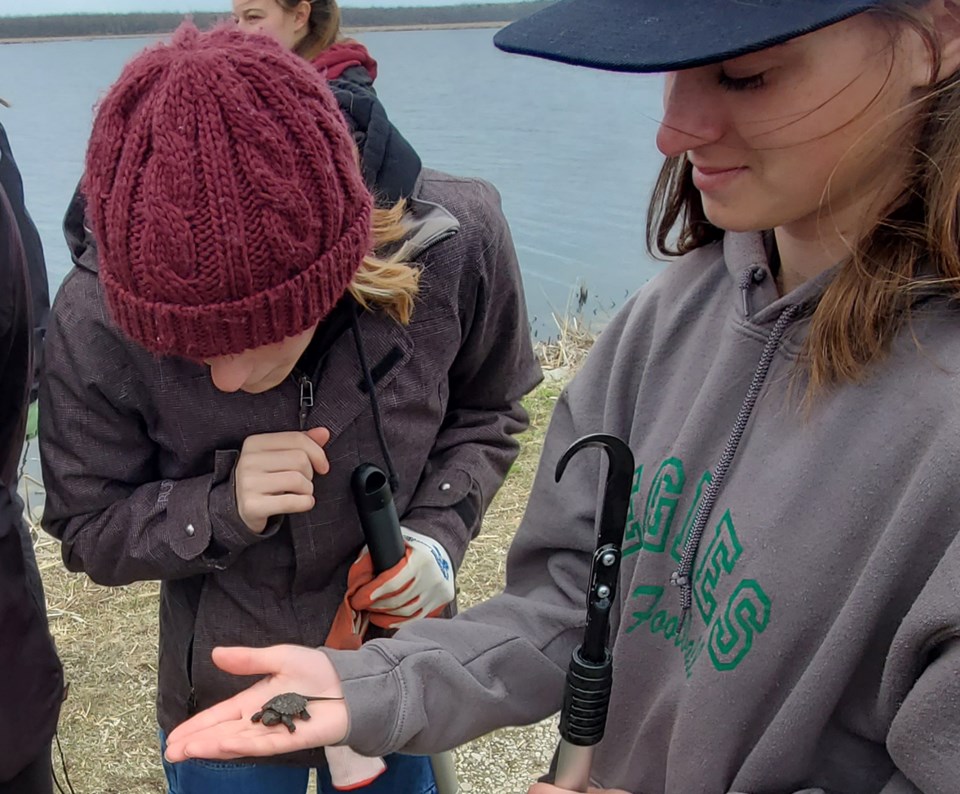Over the last few weeks I have had unique opportunities to interact with a couple of high school classes, both on-line and in-person. Although my role was that of ‘teacher’, lessons were also learned by me. Such as, the students sometimes knew more than for which I first gave them credit.
Something that became painfully obvious was that the old ‘sage on the stage’ manner of presentation just doesn’t cut it anymore; these youths wanted interaction, discussion and challenge!
The on-line course was a program that linked Lakehead University with Grade 11 and 12 environmental studies, consisting of a three-part series covering wetlands, invasive species and Ontario plants. Created during the worst of the COVID period, this on-line link allowed students to access experts in various fields even when field trips or in-person visits were not available.
It was admittedly weird for me to be this giant talking head on the classroom screen while the students appeared en masse in the small thumbnail-sized window of my home screen.
During my career of presenting live, it was possible to gauge the audience response by checking for drooping eyes, yawns, cellphone distractions and gazing out the window, and then adjusting to compensate. And so I droned on, talking directly into the unblinking camera, about various types of wetlands, the values of wetlands, the challenge of combating invasive species and how to tell an annual plant from a perennial.
Where I got my comeuppance was in the question period ... these ‘kids’ knew their stuff and wanted answers on how to engage, how to make change, why is government failing to protect the environment, why are wetlands still being drained, and why is farmland being flipped over for housing?
As far as this class was concerned, every day is Earth Day. Bravo, students of Nantyr Shores High School!
As I write this I’m recovering from a bit of wind burn and sun burn from working yesterday with another school doing some hands-on outdoor work. The Elmvale District High School (EDS) have partnered with the M-T-M Conservation Association to assist with field work at the Tiny Marsh Provincial Wildlife Area.
In the past year students and teachers from this high school has built bat boxes, constructed turtle nesting cages, installed 50 bluebird nest boxes and helped control the spread of invasive plants like garlic mustard and Phragmites reed. I have learned that this program at EDHS has previously planted trees and worked with other conservation agencies in the area. Again, these Grade 11 and 12 students want to be involved, included, and heard.
Although the mission of our field trip yesterday was to remove old stems of Phragmites (thus allowing cleared areas for baby turtles to access the water, and ducklings and goslings to step out of the water) the usual planned agenda quickly goes sideways when cool things are found.
Several dead catfish (more properly called brown bullhead) were found scattered along the shore. Intense curiosity as to why so many dead fish? And why was just the head found?
This led to an explanation about oxygen depletion under the winter ice coverage, the annual massive die-off of these abundant fish, and the bonanza of food available to crows, ravens, gulls and eagles as the ice melts and dead fish appear
Within the dead carcass came forth stories of energy transfer, predator/prey relationships, and how Nature provides.
Then two live creatures were encountered… a baby snapping turtle and a garter snake. This was a great coincidence as we had just talked about how the Phragmites stems can impede the small just-hatched turtles from reaching the water, and that the cut stems (when bundled and piled) create much needed shelter for snakes.
Out in the water, right beside the students, were two pure white birds mingling with thousands of Canada geese. A few thought maybe they were gulls or possibly swans? Their actual identify was snow geese.
“Snow geese? Never heard of them. Do they nest here?” This of course set me up for another ten-minute dissertation about the migratory route of snow geese, how this is a critical refueling stop on their northwards journey, how courtship and mating occur here so that when the birds finally get to their nesting ground on the Hudso Bay lowlands the eggs are right ready to be laid.
Oh yeah, and we also cut some Phragmites stems.
To my personal delight, there seems to be a shift within school boards to embrace environmental learning. Too little, too late? I hope not. However, the reality is that we live in a changing world in regards to awareness and management of our diminishing natural environment.
These students have a lot on their minds, and thankfully the preservation of a healthy world is high on their list of goals to achieve.
